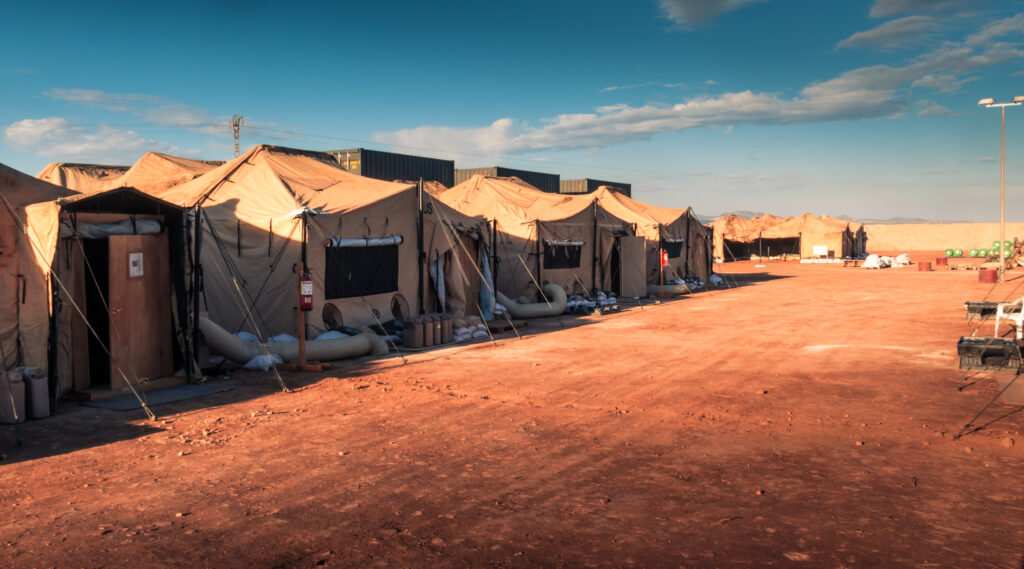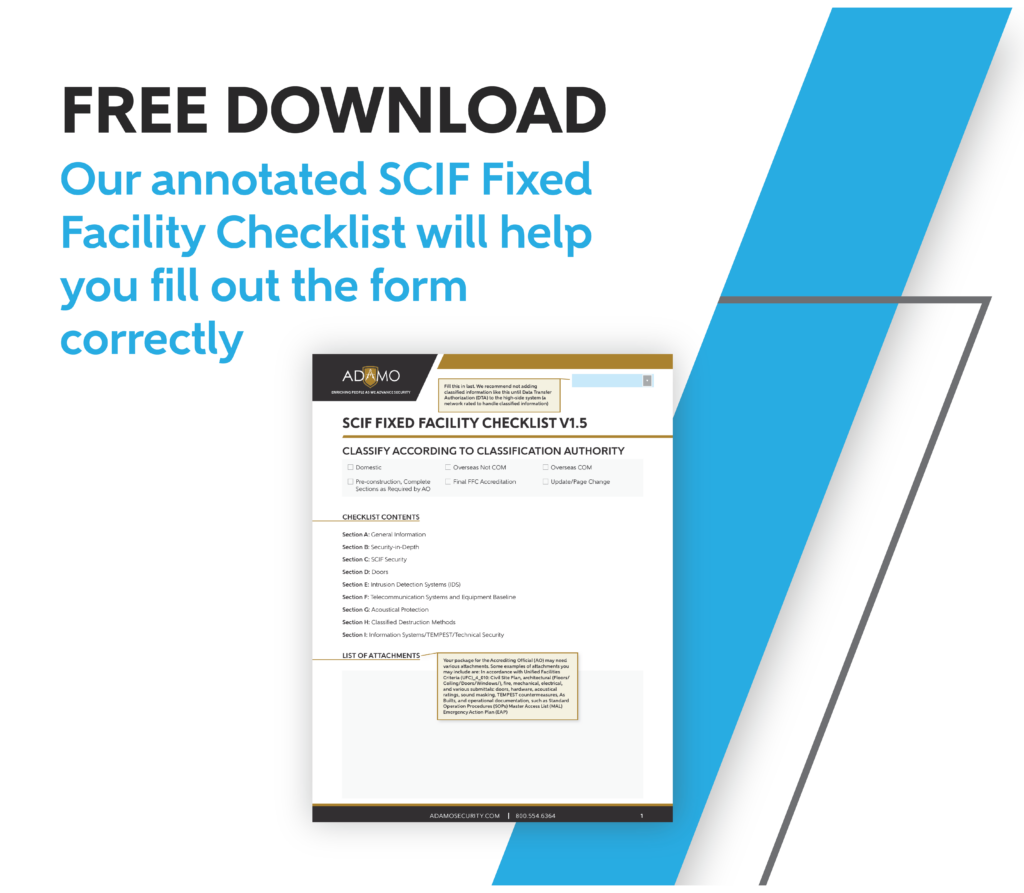When and why do you need a Temporary Sensitive Compartmented Information Facility?
T-SCIFs, or Temporary Sensitive Compartmented Information Facilities, are a type of facility deployed when a regular SCIF can’t meet the needs of a mission or program. They are not a way around having to follow the strict requirements for a SCIF found in the ICD 705 Technical Specifications, or Tech Spec, but they can serve as an excellent solution in very specific scenarios. In order for them to be effective, they need to follow a fairly different approach to security than fixed facilities.

T-SCIF Standards
The T-SCIF standards are laid out in chapter six of the Tech Spec. Unlike the SCIF standards, T-SCIF requirements are intentionally more vague to allow them to be deployed in a variety of situations. Ultimately, what’s required of them is up to the Accrediting Official (AO) overseeing the project.
An AO isn’t always as involved in a T-SCIF as they are a permanent one, however. Government and military organizations have the authority to designate a space a T-SCIF. An AO may end up requiring a Fixed Facility Checklist (FFC) or a more complete accreditation package, but that isn’t always the case.
T-SCIFs are built less to specific requirements and more to security principles. Risk management is an important part of T-SCIFs. For instance, acoustic protection may be necessary, but that can be done through standoff distance requirements or white noise machines depending on the situation. Physical hardening may not always be a possibility, like for a tent, but can be added for some facilities. The most important thing is that there are protections in place to prevent unauthorized access to the SCI the facility houses. Risk management must be balanced with the needs of the mission.
There are some specific requirements these facilities need to follow. T-SCIFs must not operate for more than a year without mission justification for an extension. They must only have one entrance. SCI Needs to be stored in GSA-approved containers unless the AO has granted an exception.
As previously stated, the requirements for T-SCIFs are purposefully vague because they have to be deployed in situations that don’t allow for a permanent facility.
When are T-SCIFs used?
While SCIFs offer a high security way to protect classified information, they also have their limitations. More than anything, building a new SCIF is a time-consuming and expensive venture. T-SCIFs are how the government allows for agility and flexibility in response to different program needs.
T-SCIFs may be used for testing equipment that doesn’t need a permanent location or can’t be used within a facility. In this situation, a warehouse where the tests can be conducted could be designated a T-SCIF, or even the roof of a building.
T-SCIFs are often deployed in field situations and could be as simple as a tent in a military compound. For these types of facilities, there may be SCI-indoctrinated guards or standoff distance requirements to prevent overhearing of information.
The Tech Spec also allows for a T-SCIF that can be towed from place to place. This facility may follow a certain person or mission on the road. This may have some stricter requirements, like being secured with approved locking hardware while in transit.
For high-ranking officials like the president, T-SCIFs may need to be created on the go. For example, if the president is staying in a hotel and needs to take a call about something classified, that space could be designated a T-SCIF and mitigations will be made to protect that information.
A T-SCIF may also be used as a response to a natural disaster. If an existing SCIF is destroyed by a tornado, a T-SCIF may be deployed to maintain the mission until the permanent facility can be repaired or a new one is built.
Benefits of T-SCIFs
Flexibility
The biggest benefit of T-SCIFs is their ability to maintain security measures for missions that cannot be completed in a permanent SCIF for one reason or another. If equipment needs to be tested for a short period of time in a warehouse, you could potentially do that by turning the whole building into a SCIF, but that would take millions of dollars and months or even years to complete. With a T-SCIF, the facility can be secured for a fraction of the price and within a much faster timeline.
SCIFs offer unparalleled security for our most sensitive information, but they simply aren’t practical in every single scenario. T-SCIFs help to bridge the gap without having to fully sacrifice risk management.
Speed
A T-SCIF can be designated and operational far faster than any permanent facility, even if the T-SCIF requires further approval. When speed is mission critical, like for a program whose facility was destroyed by a natural disaster, a T-SCIF can keep them up and running until they’re able to be back in their permanent space.
T-SCIFs are helpful in a variety of situations, but they’re not a substitute for a properly accredited facility. If you’re worried about getting your accreditation package approved, Adamo can help. Our technical consultants can help guide you through every step from pre-design to accreditation. With over 1000 SCIFs designed or consulted on and a 100% approval rate, you can trust us to guide you through the process and make it feel easy. Contact us today to learn more about how we can partner with you on your SCIF project.




